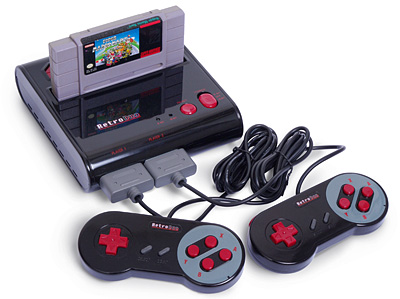If you think about it CEOs, game designers, producers, and even programmers are all artists and impresarios were putting together work of art. Some people are really interested in money 1st. Others are totally into it because they just passionately love games. The medium in which these games are delivered can really influence the art of gaming.
The current debate for some people in the business is to wonder if they should put all their eggs in one basket. Should they be console game people, where should they be free to play people. Personally, I don't think either one is going to go away soon and I also think that some game companies might want to think about integrating the two a little bit more.
Now we have mainly console and F2P. The debate is somewhat polarizing. Professionals and CEOs seem to feel they have to choose one camp or the other for the direction of the company.
Gamers, some of which actually seem to hate or love F2P and the really hardcore still seem to love the console.
Interestingly enough, the gaming and gambling industry under the direction of Louis Castle seems to be going in a sort of direction which combines the two.
I guess in a way when I'm trying to do is pick out loud about helping my clients to figure out what they need in their companies by anticipating their needs.
I thought it might be cool to look through the history of games up to about 2006 below just to get a little bit of perspective.
Introduction

Knowing something about the evolution of the games industry will help in your quest to become a professional in this business. It’s just one of those things that you need in order to be taken seriously by other gamers.
This is a (very) brief history, beginning with the birth of SEGA, with particular emphasis on milestones in hardware development.
First There Was SEGA
Originally a U.S. company providing coin-operated (arcade) games primarily for military bases, SEGA began life as Services Games. After purchasing a Japan-based machine company in the early-‘60s, the company transformed itself into SEGA. During that same time, an industry founding father, Nolan Bushnell, designed an arcade version of “Asteroids” to play on his newly developed dedicated game machine. Thus the first cartridge-based game system was born, introduced to the market as VCS and later known as the Atari 2600.
During this era, other companies created their own game systems, including Coleco and its Colecovision, Milton Bradley Electronics and its Microvision and Vectrex, Mattel Electronics and its Intellivision, and Commodore Computer and its Commodore 64, all of which had impact on, but eventually disappeared from the scene.
Although not a dominating force until the mid-’80s when it caught the attention of the U.S. gaming community with the introduction of the Nintendo Entertainment System (NES), Nintendo was actually founded in 1889. It is, in fact, the oldest game company still in existence. Atari and SEGA competed head to head with Nintendo, but the company proved a worthy opponent with the release of its Game Boy handheld device and the smashing success of the Super Nintendo (SNES) console.
Over the next few years, the unfolding battle witnessed SEGA’s release of its Sega Master System to compete against NES, and Atari’s release of the 7800. Commodore Computer also entered the fray with the CDTV. While the TurboGrafx-16, SEGA Genesis, and Atari Lynx machines tried to compete, Nintendo ultimately stole the bulk of the marketshare. Thanks to its portability and associated free games (“Tetris” and “Super Mario”), Game Boy sales were significant.
The Console Wars Heat Up
When Sony entered the scene, the 32-bit console wars began. Initially, Sony and Nintendo collaborated on the development of a CD player to work with the SNES. While this development project failed, it gave Sony an idea. The company chose to develop a 32-bit game machine known as PlayStation (PSX) to compete directly with Nintendo. Among other notable competitors who jumped on the 32-bit bandwagon was The 3DO Company, started by Electronic Arts founder Trip Hawkins, who announced his new 32-bit gaming console in association with Panasonic. However, Panasonic eventually acquired the 3DO technology for use in other devices.
Trying to reclaim lost marketshare, Atari then came out with its doomed 64-bit system known as Jaguar. By the late-‘90s, the market was totally confused as evidenced by alarmingly sluggish sales. The SEGA 32X and Saturn came and went, and Nintendo bombed with a few platform releases as well. Eventually, Atari was forced out of the hardware business.
Currently, the industry’s popular development platforms are the personal computer (PC), Sony’s PlayStation 2, Microsoft’s Xbox 360, and Nintendo’s GameCube and Game Boy Advanced (GBA). The market for PDAs and mobile phones is also gaining momentum and promises to be the next growth focus.
A short while ago (2006) we had Sony, Nintendo, and Microsoft competing for market share with their next-generation consoles; Microsoft’s Xbox 360 was released in November while Sony’s PlayStation 3 and Nintendo’s Wii. SEGA was still creating games but has chosen to halt production of hardware. Atari chose this same path years ago.
And now we have mainly console and F2P. The debate is somewhat polarizing. Professionals and CEOs seem to feel they have to choose one camp or the other for the direction of the company.
Gamers, some of which actually seem to hate or love F2P and the really hardcore still seem to love the console.
How will you contribute to the continuation of this story?







No comments:
Post a Comment